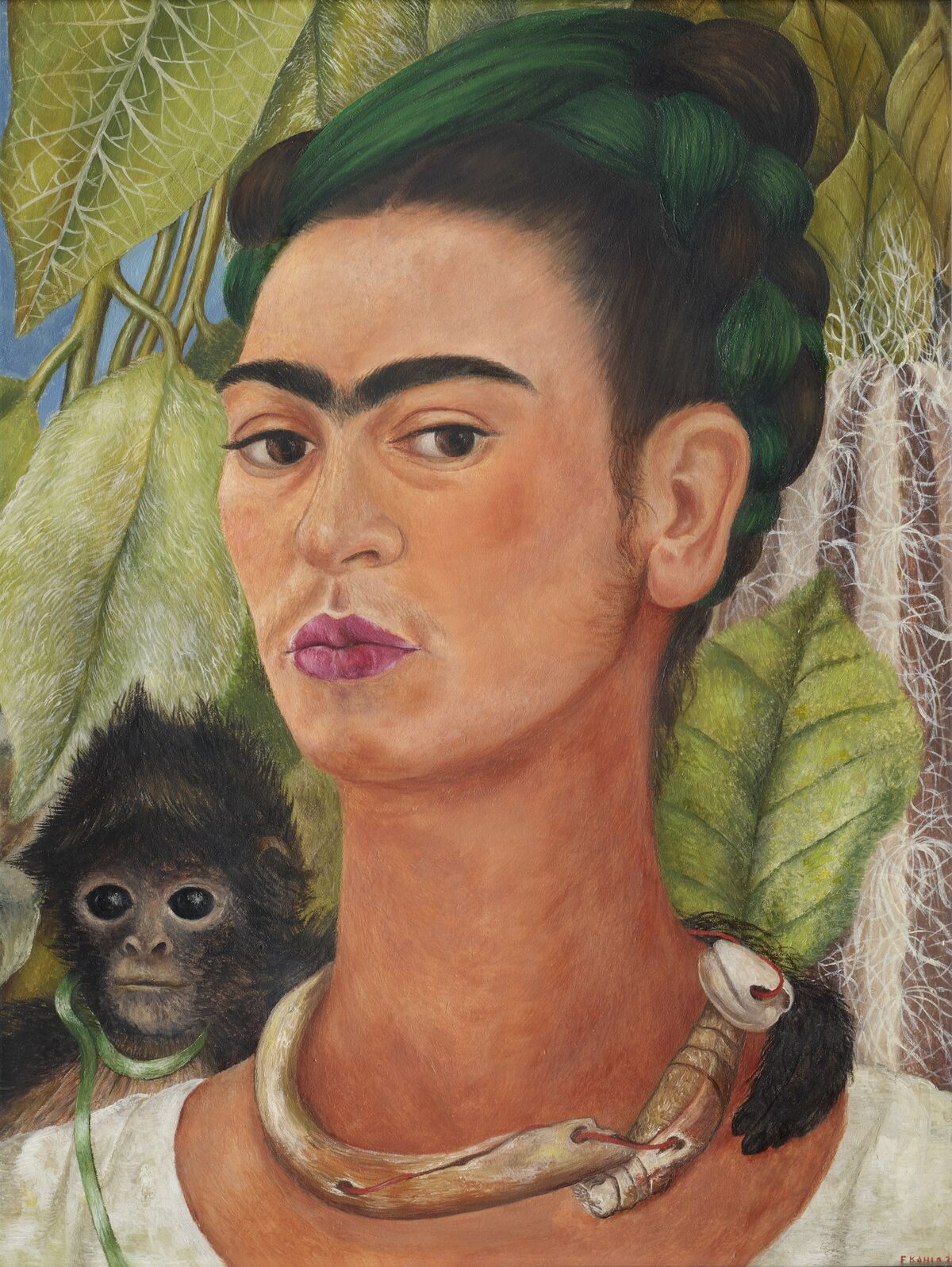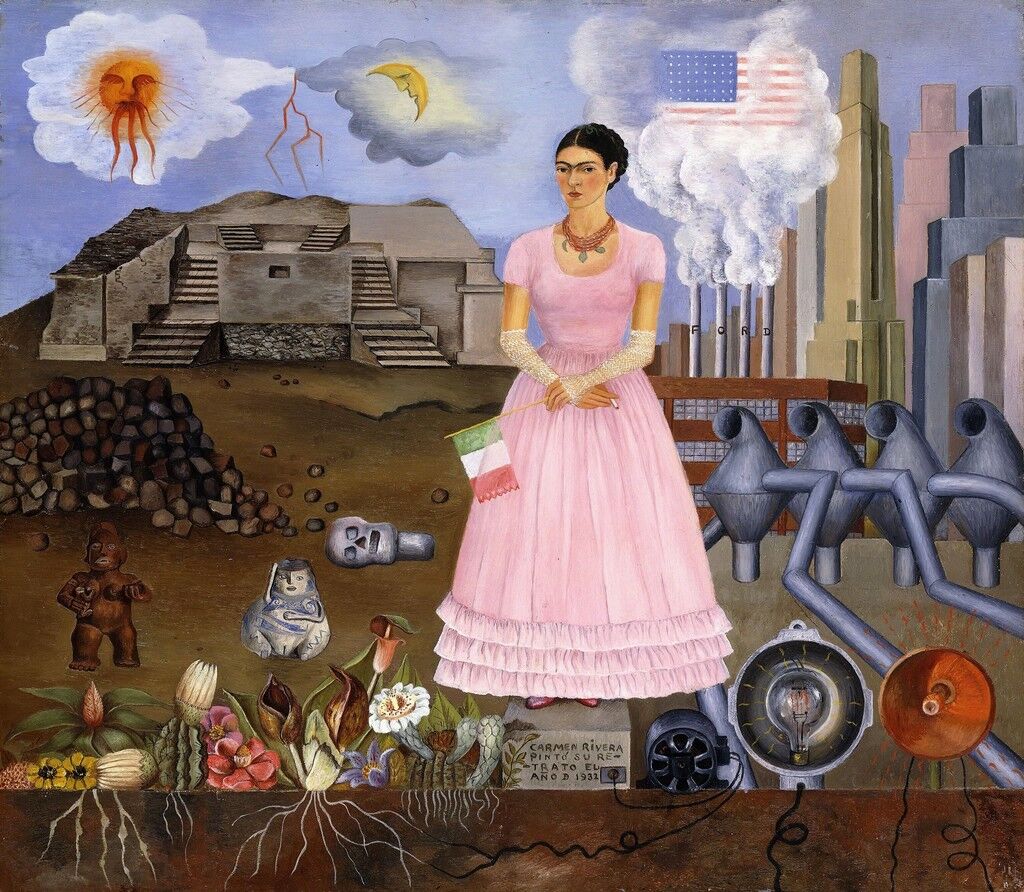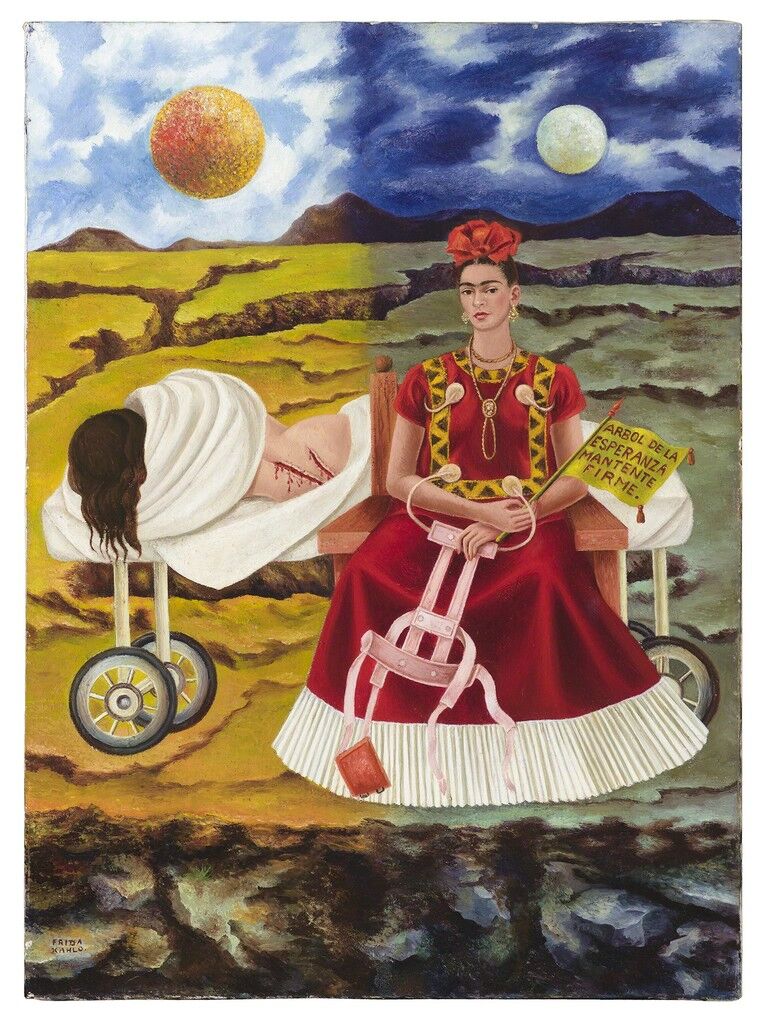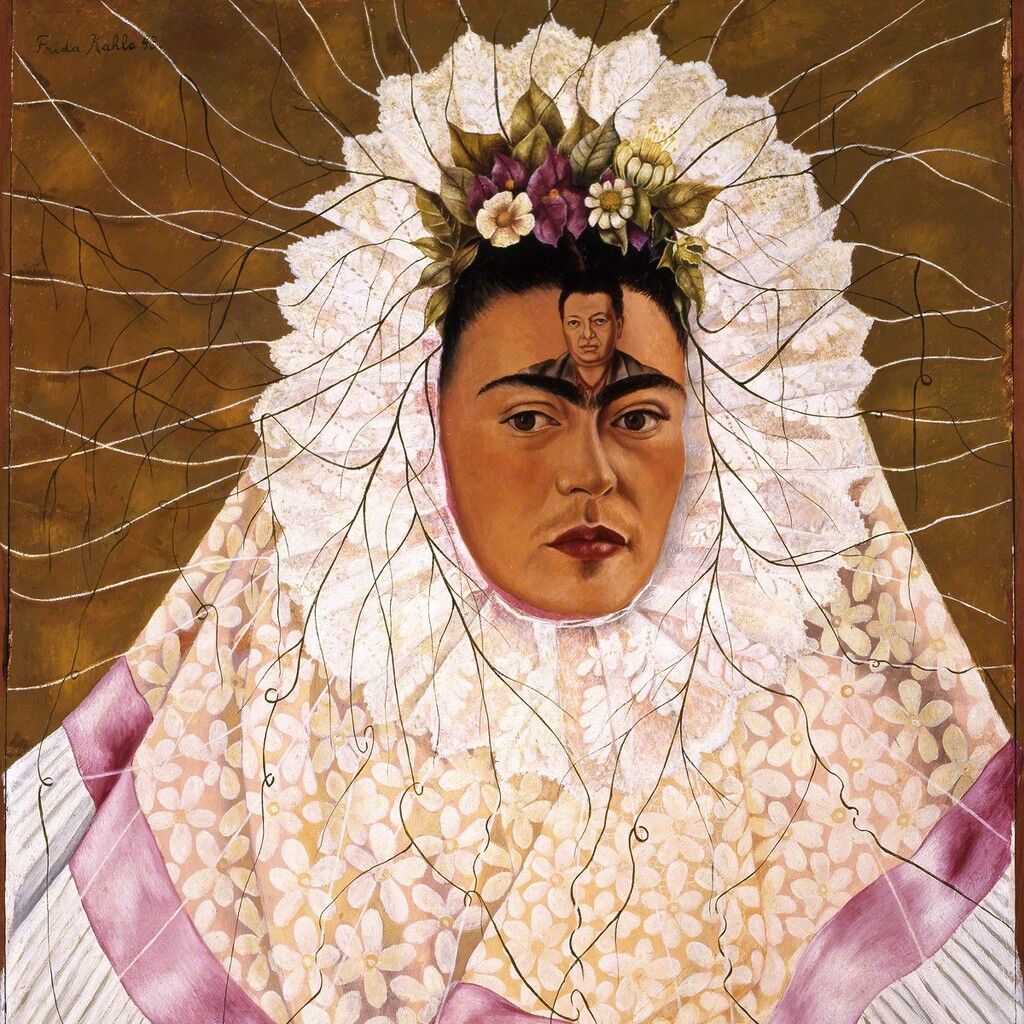The Artwork That Changed My Life: Frida Kahlos Self-Portraits

Frida Kahlo, Self-Portrait with Monkey, 1938. © Banco de Mexico Diego Rivera Frida Kahlo Museums Trust, Mexico, D.F. / Artists Rights Society (ARS), New York. Courtesy of Albright-Knox Art Gallery.
artsy_The first artwork I remember seeing is a Frida Kahlo self-portrait with a monkey on the artist’s shoulder. I was 14 years old, on my first-ever trip to London and to the Tate Modern. Surely I visited museums before that, but I don’t remember those experiences. Yet I vividly recall riding up an escalator and seeing the bold, eggplant-hued wall that introduced a major retrospective of the Mexican painter’s work. In the exhibition, Kahlo’s likeness surrounded me. She stared down at me with deep, dark eyes and that famous, thick “V” of a unibrow. Her faint mustache undermined the womanliness of her plush, rosy lips, which weren’t smiling, but pursed and serious. I was in awe.
The memory is so clear both because the work was so striking, and because I saw the artwork at a rough time in my life. I was a moody adolescent in Europe for the first time, on the verge of starting high school, coming off a terrible month at a language camp in Spain. It was an enormous privilege, of course, to take Spanish classes just outside Marbella, on the Andalusian coast. Yet I’d mostly squandered the opportunity by involving myself in petty dramas and fretting about what I was missing back home in Ohio. My troubles, in retrospect, boiled down to my persistent attempts to be someone I wasn’t. Kahlo’s self-portraits introduced me to an entirely new version of femininity and self-determination.
Frida KahloSelf-Portrait on the Border Line Between Mexico and the United States, 1932"Paint the Revolution: Mexican Modernism, 1910–1950" at Philadelphia Museum of Art
When I arrived at the camp about a month before this Tate Modern visit, I quickly decided to align myself with the French girls. Campers came from around Europe and the United States, and the Parisians clearly wore the chicest clothes, had the slimmest figures, and attracted the cutest boys: I was enamored with one named Tristan. He hung out with a girl named Alix, who was also an excellent tennis player and spoke flawless English because she’d been raised by an American nanny. Forget about improving my Spanish—all I wanted was for Tristan to kiss me and Alix to like me.
In my efforts to win approval from the French, I mostly neglected the two girls who actually seemed interested in becoming my friends: Americans named Christina and Frankie. Christina wore a lot of black clothing and eyeliner. Her pants featured metal grommets. Frankie was quiet, with some freckles. She was reading Milan Kundera’s The Unbearable Lightness of Being (1984). We chatted about books—I was halfway through Barbara Kingsolver’s The Poisonwood Bible (1998)—but I didn’t want to become a nerd who sat around and read a lot, and I definitely didn’t want to be seen with a goth.
I got my comeuppance during the weekend interval between the two, two-week-long camp sessions. I was one of only a handful of girls who were staying for both, and they all decided to room without me. I spent a couple of nights, all alone, in a bunk with one of the counselors. Meanwhile, I continued to write sunny emails to my best friend back home, who’d started smoking pot in her pool house and hot tubbing with boys while I was gone. A rift was growing between us, too.
Frida KahloArbol de la Esperanza (Tree of Hope), 1946
MCA Chicago
Frida KahloDiego on my mind (Self-portrait as Tehuana), 1943
Art Gallery of New South Wales
On the way back from Spain, my father had arranged for me to stay with friends of his in London for a few days: a foley artist and a producer he’d met back in college, during a year abroad. The couple had two daughters who were a few years younger than me and asked endless questions about American schools and social customs. They wanted to know how true to life Mean Girls (2004) really was. For the first time all summer, I was an object of intense interest. I shared what I could, trying to make it as compelling as possible.
When we all visited the Frida Kahlo retrospective together, I was still sorting through everything that had happened over the past month and comparing myself to others—to my more experienced friend back in Ohio, to the girls at camp, and to the mother and daughters in this British family. The exhibition exposed me to an entirely different way of being. Kahlo had painted herself over and over again. She’d embraced her multiplicity, contradictions, and those superficial elements like the eyebrows and the dark upper lip that others might have seen as flaws.
Kahlo celebrated strangeness and transformed her own angst and uncertainties into art. Her life was filled with drama. Her husband, Diego Rivera
, cheated on her with her sister. She suffered a crippling bus accident and chronic, lifelong pain. Yet out of this trauma, she made raw, enduring canvases that both told her own story and suggested psychological truths that connected with a much broader, global audience. It would be years before I was willing to acknowledge certain parts of myself, and acceptance is an ongoing battle. But I’ll always be grateful to Frida for giving me a little bit of hope and gently altering the way I saw the world.



